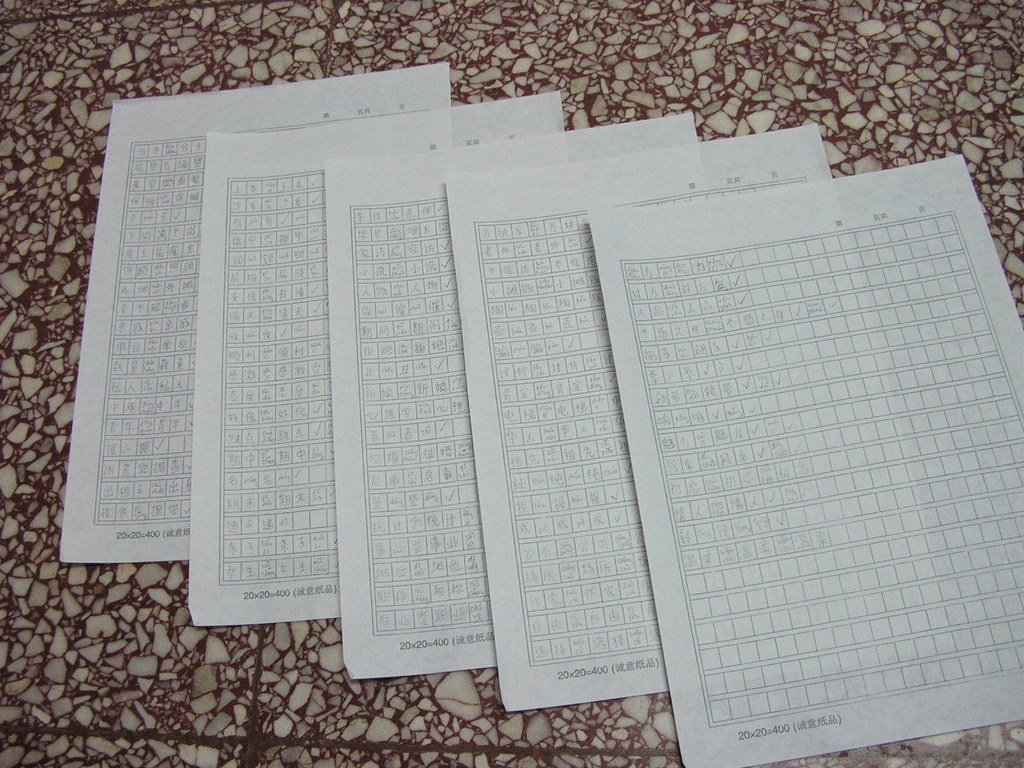Character Memorization Tips
I think I forgot to mention that I cut my hair again. I told the stylist to just have fun. I ended up with another haircut like Chinese pop singer Wang Fei. The man seemed so excited about having gotten to do that.

I look a little somber. Lately I have reached a saturation point with study. Tonight I studied and learned 100 characters to the point where I can write them when I hear them. To my counterparts in the US: you have it so easy in your Chinese classes. Stop complaining. It seems hard now, but you'll understand how easy on you your teachers are being if you ever enroll in a Chinese school. I formally retract any complaining I may have done about the twice weekly xiaokao (small vocabulary tests) at IU, or anything else relating to learning how to write.

These are my practice sheets for the night. I should note that I have a new method of studying characters now. I used to just write them over and over while saying them aloud. I have come to realize how inefficient that is. If you do that, you're not attaching any meaning to the characters. You're not learning them; you're learning a reaction. That is not helpful. What I do now is read texts containing the target characters I don't know, and then mark the pinyin beneath them when I come across them. If I'm unclear on the meaning, I look for the translation of the word. After I have some idea of usage I start the memorization process.
I write the characters down the page, and next to them I write their pinyin. Then I cover up the line characters, read the pinyin aloud, and then write the correct character. After writing a line of characters, I cover the pinyin. I look at the characters, pronounce them, and then write the pinyin. If I get both the character and the pinyin correct, I put a checkmark by the set, and don't work on it anymore. There isn't any point to reworking it constantly when I already know it. If I get either one of those things wrong, though, I continue the process. If there's a particularly difficult character, I start to memorize its component radicals, and then arrange them in my head accordingly. If I'm having trouble still, I close my eyes and write them in the air. I try to take a picture of them with my mind, and then redraw them.
I think it's good to memorize the component pieces, though. It's alot easier to see where the meaning of the character is coming from, and how that character is related to another one that has one of the same component parts. Trust me, Chinese language students, memorizing characters gets easier with the more of them that you've memorized. When you're first starting, you've got a blank slate, and it's completely unhelpful. Learn your radicals, even if your teachers aren't emphasizing them. Also, learn stroke order. If you're really having trouble memorizing how to write a character, you can fall back on being able to say the strokes to yourself. Sometimes I listen for the rhythms that writing them makes, too, and memorize that. That's surprisingly helpful.
Now it is much later than I should be awake. I have a test tomorrow in my listening class, and I need to be very conscious if I'm going to do well on it. I still have problems with the recorded texts, but I'm getting better.


0 Comments:
Post a Comment
<< Home